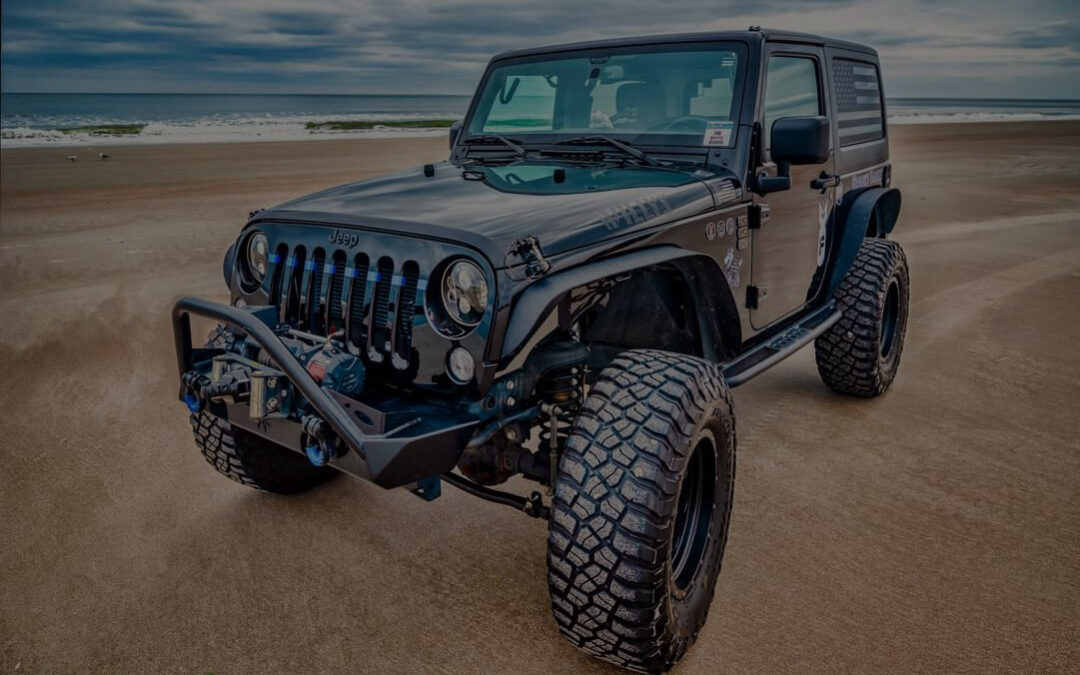Jeep is known for its rugged and adventure-ready vehicles, but what many consumers really want to know is where these iconic models are actually built.
With a long history rooted in American manufacturing, Jeep continues to produce many of its vehicles in the United States while expanding production to meet global demand.
If you’re curious or are thinking of buying a Jeep, knowing where each model is assembled could better explain the brand’s commitment to quality and heritage.
Jeep’s American Roots
Jeep began as a military vehicle produced by Willys-Overland in Toledo, Ohio. Over time, the brand transitioned to civilian models.
Despite multiple ownership changes, including Chrysler, Daimler, Fiat Chrysler Automobiles (FCA), and now Stellantis, Jeep’s headquarters are in Toledo.
Today, some of Jeep’s most popular models (the Wrangler and Gladiator) are still manufactured in the same city where the brand was birthed.
Jeep Models Built in the U.S.
Multiple Jeep vehicles are assembled in American factories:
- Wrangler & Gladiator – Both are produced at the Toledo Assembly Complex in Ohio.
- Cherokee – Manufactured at the Belvidere Assembly Plant in Illinois.
- Grand Cherokee – Built at the Jefferson North Assembly Plant in Detroit, Michigan.
Even though these models are assembled in the U.S., they may have components sourced from other countries. Still, they are among the most American-made vehicles and rank high on lists that consider domestic production levels.
International Jeep Production
As Jeep’s global presence has grown, the company has expanded its manufacturing operations outside of the United States.
Jeep now has ten production facilities across the world. This includes plants in Italy, Brazil, China, India, and Mexico. Some models that are manufactured outside the U.S. are:
- Renegade – Assembled in Melfi, Italy, for European and North American markets.
- Compass – Produced in Melfi, Italy, as well as in Brazil, China, and India.
- International Cherokee – A variant of the Cherokee is built outside the U.S. for global markets.
Jeep’s Key Manufacturing Locations
Toledo, Ohio
Toledo is at the heart of Jeep’s American production. The Toledo South Assembly Plant is part of the larger Toledo Complex and was renovated in 2006 to improve Jeep Wrangler manufacturing.
Originally, Willys-Overland operated here, building military Jeeps for World War II before shifting to civilian production. As years passed, ownership changes never impacted the plant’s role in assembling Jeeps.
Today, this facility produces the Wrangler and Gladiator. It continues the legacy of Jeep’s most recognizable off-road vehicles.
Detroit, Michigan
Detroit is pretty central as far as Jeep production goes, particularly for the Grand Cherokee. Since its introduction in 1993, this midsize SUV has been assembled here at the Jefferson North Assembly Plant. It’s the only auto assembly facility located entirely within the Detroit city limits.
Chrysler opened this plant in 1991. This was later expanded to accommodate growing demand. The facility has also produced other models, like the now-discontinued Jeep Commander and Dodge Durango.
Melfi, Italy
When Chrysler merged with Fiat in 2014, Jeep shifted some of its manufacturing to Italy. The Renegade (Jeep’s subcompact crossover) became the first model produced entirely outside North America.
Melfi, Italy, is now the primary manufacturing hub for both the Renegade and the Compass. It produces models sold in Europe and North America. The Renegade is built alongside the Fiat 500X, showing Fiat’s influence on Jeep’s compact lineup.
Goiana, Brazil
In 2015, Jeep set up a major assembly plant in Goiana, Brazil, to meet growing demand in South America. This facility spreads over six million square feet and has a test track, a research center, and extensive assembly operations.
The Jeep Renegade and Compass, along with the Fiat Toro, are built here for the South American market. Brazil has since become the second-largest market for the Renegade and Compass. It trails only the U.S. in sales.
Guangzhou, China
Jeep’s expansion into China started in 2015 through a joint venture with GAC Group. This partnership gave Jeep the chance to establish production in Guangzhou, where Chinese versions of the Cherokee, Renegade, and Compass were built.
Manufacturing in China allows Jeep to reduce import costs and strengthen its presence in the Asian market.
Jeep’s Parts Manufacturing and Domestic Ranking
Jeep vehicles assembled in the U.S. consistently rank high in domestic manufacturing indexes.
Take Cherokee and Wrangler, for example. They’ve been featured on Cars.com’s American-Made Index, which judges vehicles based on assembly location, parts sourcing, employment impact, etc.
The Jeep Cherokee frequently ranks among the top five American-made vehicles.
While Jeep vehicles built in the U.S. have a high percentage of domestically sourced components, models like the Renegade and Compass add parts from multiple international locations like Italy, Brazil, Mexico, India, and China.
This gives a hint of Jeep’s global manufacturing strategy while holding a strong American presence.
Jeep Wrangler Production: Still 100% American
For all who prefer a Jeep built entirely in the United States, the Wrangler is a top choice. Every Jeep Wrangler is produced at the Toledo South Assembly Plant, where it has been manufactured since 1986.
Many major components, like its chassis and 3.6-liter Pentastar V-6 engine, are also produced in North America. The plant uses thousands of workers who are dedicated to assembling this legendary off-road vehicle.
The Wrangler’s history dates back to World War II when the Toledo facility only built military Jeeps. Today, the plant continues to produce civilian models.
Historical Jeep Production and International Licensing
Jeep’s U.S. plants are central to its operations, and the brand has a history of international production under licensing agreements.
In the past, various manufacturers produced Jeep models for specific markets:
- Mitsubishi – Built CJ-3B military variants for Japan’s police and forestry services in the 1950s.
- Mahindra – Produced licensed versions of the CJ-3B in India, known as the Mahindra CJ.
- Turkey – Jeep models were assembled in Izmit, Turkey, under Türk Willys Overland.
Are Jeeps Made in the U.S. or Overseas?
For American buyers who prioritize domestically built vehicles, Jeep provides multiple models made in the U.S., like the Wrangler, Gladiator, Cherokee, and Grand Cherokee.
Jeep does produce some models abroad but the vehicles built for the North American market are mostly assembled in the U.S. The exceptions are Renegade and Compass, which are manufactured in Italy but sold globally.
Frequently Asked Questions
Why is Jeep so popular?
Jeep’s reputation was built on its military heritage, durability, off-road capability, etc. Since World War II, it has become one of the most recognizable automotive brands.
Jeep vehicles are known to combine tradition with innovation. They’re highly sought after among collectors and off-road enthusiasts.
Are Jeeps made in Italy?
Yes, the Renegade and Compass are manufactured at the Melfi Assembly Plant in Italy, serving European and North American markets.
Where was Jeep invented?
Jeep originated in the United States, specifically in Toledo, Ohio, where Willys-Overland first built military Jeeps for World War II.
The early prototypes, though, involved contributions from American Bantam Car Co., Willys-Overland, and Ford Motor Co.
Where are Jeep engines made?
Jeep’s Pentastar V-6 engine is produced in three North American facilities:
- Trenton Engine Complex, Michigan (3.6L, 3.2L, 3.0L)
- Saltillo South Engine Plant, Mexico (3.6L)
- Mack Avenue Engine Plant, Detroit, Michigan (3.6L, 3.2L)
Where are right-hand drive Jeep Wranglers produced?
Right-hand drive Jeep Wranglers for export markets are built at the Ranjangaon Assembly Plant in India. This makes availability certain in regions where left-hand drive vehicles are not standard.
Final Thoughts
Jeep’s manufacturing footprint has expanded globally and has maintained strong American roots.
The importance given to quality and tradition is evident in its U.S.-built models. The international facilities make sure of Jeep’s presence in top markets worldwide. Wherever they’re built — Jeep vehicles extend performance and reliability.



